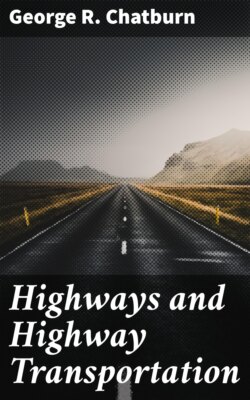Читать книгу Highways and Highway Transportation - George R. Chatburn - Страница 57
The Panama Canal.
Оглавление—All present-day readers are familiar with the greatest of all ship canals, the Panama Canal, constructed by the Government at a cost of approximately $400,000,000, and open to the ships of the world. It will be remembered that a canal across the isthmus had been dreamed of practically ever since Balboa passed over and for the first time a white man saw the Pacific from the west coast of America. With the opening of the Oregon territory there was increased interest in such a canal. With the discovery of gold in California much traffic went by way of Panama being freighted across and transshipped on the other side. Soon a railroad was established for that purpose. Other crossings, too, were much in mind. In 1846 a treaty of amity and commerce was entered into with New Granada, afterwards the United States of Colombia, which gave the United States a right of way across the Isthmus by any available method. In return the United States agreed to guarantee the neutrality of the Isthmus. Great Britain had likewise long been interested in a canal scheme and courted Nicaragua. Also because of English settlements at Belize or British Honduras they claimed rights which had been confirmed by the treaty of Versailles in 1773. Another route, across the isthmus of Tehauntepec, had also assumed importance. In 1848 a company of American citizens was formed for and began at once to construct a railway across the isthmus of Panama. Another contracted with the Nicaraguan government for a canal there. A treaty was made with Nicaragua whereby a concession was granted the company for the waterway, the United States guaranteeing the neutrality of the way as had been done with New Grenada. But the British government claimed control of the eastern terminus, therefore a treaty had to be negotiated with her. As a result the Clayton-Bulwer Treaty was signed and ratified in 1850, whereby the United States and Great Britain agreed to join in promoting a canal by the Nicaraguan route promising that neither “would obtain or maintain for itself any exclusive control over the ship-canal,” nor, and here was the joker, “assume or exercise any dominion ... over any part of Central America.” Neither was to acquire nor have any rights the other did not have and they both guarantee the neutrality of the canal. This, apparently, was a violation of the Monroe Doctrine in so far as it did allow a European nation a foothold upon this continent, and it was contrary to the Washingtonian policy of avoiding “entangling alliances.” However, it was considered at the time to be a victory for American diplomacy. But Great Britain retained her hold on Belize and some islands along the coast, and finally it was made known that before the signing of the treaty Sir Henry Bulwer had left with Clayton a memorandum to the effect that British renunciation in Central America should not apply to “Belize” or any of its “dependencies.” Greytown, a British trading post, had been established as a “free” city at the eastern terminus of the Nicaraguan route through British influence and support.
In 1851 Greytown levied tribute upon the steamers of the transit company. One of these refused to pay and was fired upon by a British man-of-war, the fiction of Greytown being a “free city” apparently went glimmering. The situation was critical and for some time looked as though a war might result. Meanwhile the Accessory Transit Company continued in a state of trouble with the Greytown government. So bad was it that the United States vessel Cyane was called upon to protect the buildings of the Canal Company from destruction. Conditions remained strained, feelings ran high, until in 1854 one of the officers of a company steamer killed an individual and in a riot which followed the mob attacked the United States consul. Lieutenant Hollins, commanding officer of the Cyane, demanded reparation, and as this was not forthcoming he bombarded and destroyed the town. This accentuated the trouble between the United States and Great Britain but did not particularly enhance the building of the Nicaraguan canal.
About this time Great Britain became involved in the Crimean War while in the United States the slavery question divided the country. Some hot-headed southerners wished forcibly to annex Nicaragua and filibusters actually joined in some of the “revolutions” which are almost always in progress in Central American States with the idea of extending slave territory.[55] Through one of these a man by the name of Walker had made himself head of Nicaragua and for two years remained a dictator. His rule was marked by severity and a series of acts that won him the enmity of the Central American States and also that of the Accessory Transit Company, whose charter and steamers he confiscated. He had secured the presidency and opened the state to slavery; he had also been able to get recognition at Washington. But another revolution broke out and he was driven out in 1857.
The action of Walker had destroyed American influence in Central America. In the United States opinion was divided. Slavery enthusiasts openly advocated control of any transit route across the isthmus and that “no power on earth should be suffered to impede.”[56] This and numerous other troubles which followed, off and on intermittently, delayed and prevented canal construction.
